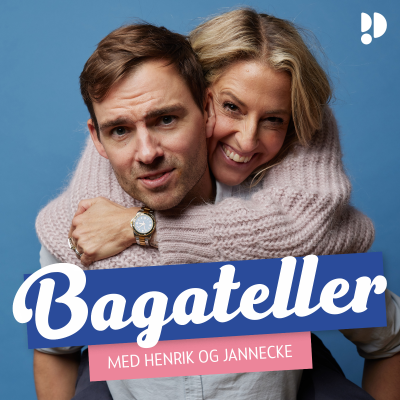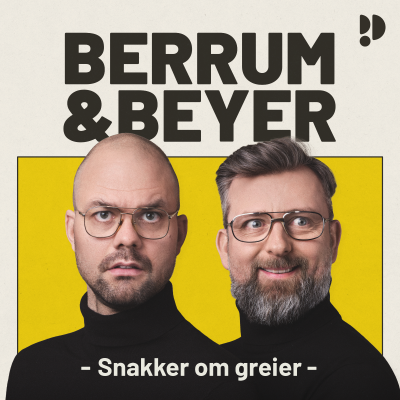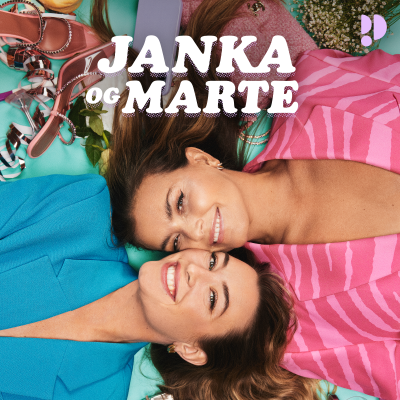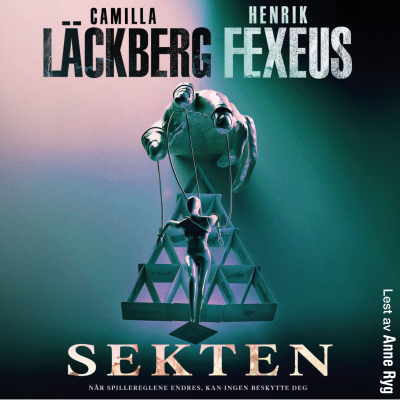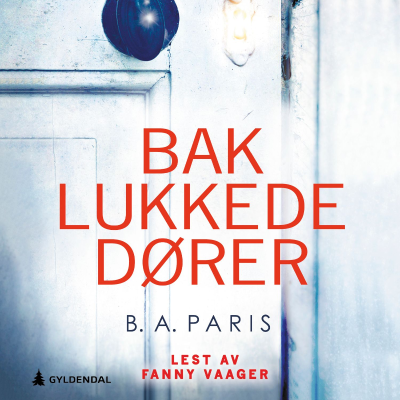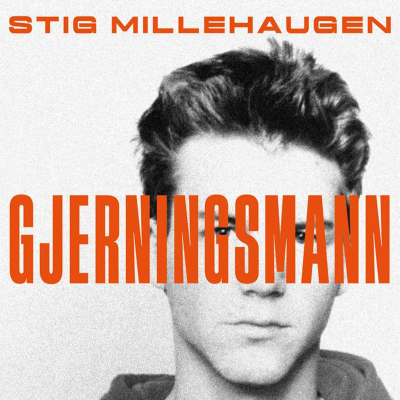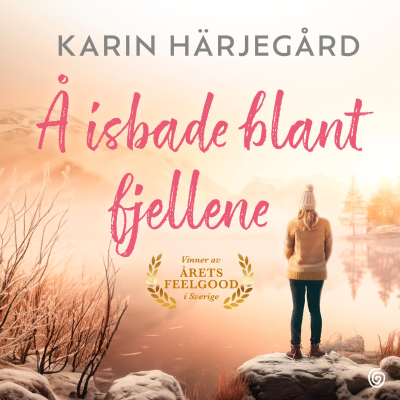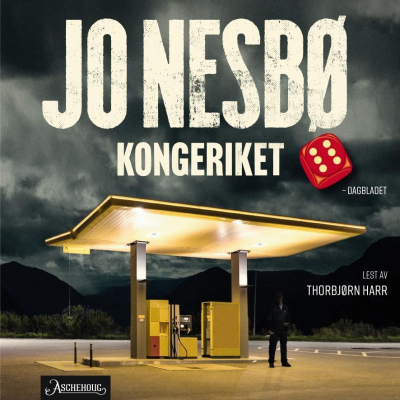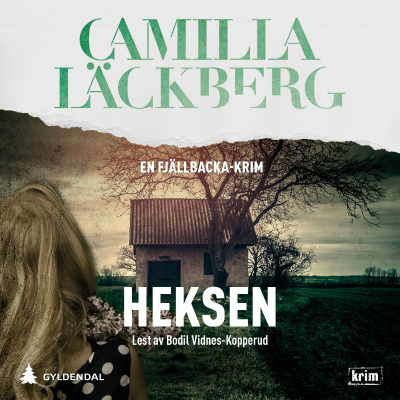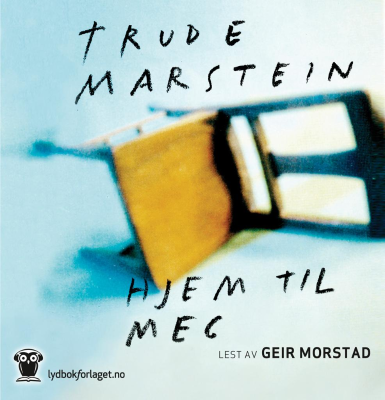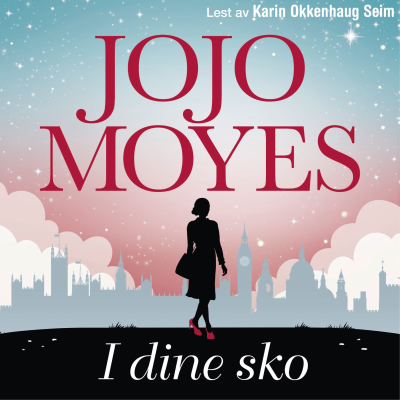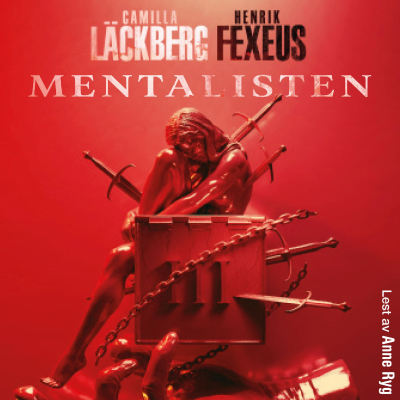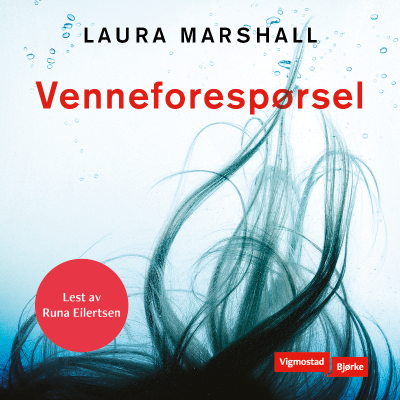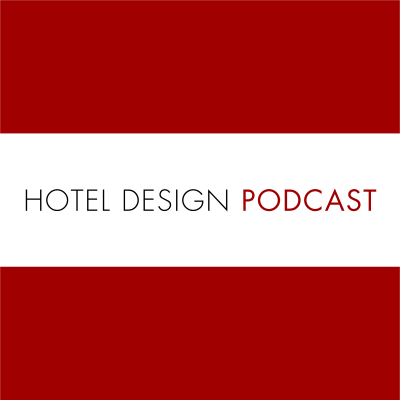
Hotel Design Podcast
Podkast av Porcelanosa
The Hotel Design Podcast features some of the world’s biggest names in hospitality architecture, branding & design. Host Glenn Haussman and his guests explore the dynamics of hotel real estate, restaurant & lifestyle design and bring in- depth and incisive view points from travel industry insiders.
Prøv gratis i 7 dager
99,00 kr / Måned etter prøveperioden.Avslutt når som helst.
Alle episoder
27 EpisoderIn this episode of the Hotel Design Podcast, we welcome Staci Patton, Principal & Hospitality Interior Design Director of DLR Group. This show was captured during the NEWH Leadership Conference in Seattle. Host Glenn Haussman has Staci start by explaining that DLR Group is a multidisciplinary design firm. Staci leads the hospitality studio, a boutique group within a larger organization, overseeing 60 people within the locations of Minneapolis, Chicago, and Kansas City. The projects that the team works on are varied, and include lifestyle and luxury boutique work. Staci says it is essential for boutique and lifestyle design is all about story telling. Without that, a hotel lacks an identity. Though it is easier to find a story through adaptive reuse buildings, even if a hotel is a new build, a smart story must be crafted to serve as a project’s design throughline. For focused brand hotels, stories can be told through the local environment. Her diligent focus on storytelling derives from her original career goal, journalism, and she shares how she discovered her true calling for design. The first project discussed is the AC Scottsdale North. Staci and her team have worked on over 35 different AC Hotel designs. Part of the Marriott brand family, this property brand stands out for its classic European modernism design. The goal for all AC Hotels is that no AC Hotel looks the same due to the customized hyperlocal influences that are used as compliments to each hotel’s design. In AC Scottsdale North, that translates to striking designs that are carried throughout the space to mirror the vertical lines of cacti found throughout Phoenix. Next, Glenn and Staci discuss the distinctions between classic style verses trends and how the design dialogue has morphed through the ages. Staci also shares insights on creating dynamic communal outdoor spaces. AC Scottsdale North’s pool and lounge are shown as examples, which have biophilic elements such as fire, waterfalls, and plants incorporated into them. The next project is the Catbird Hotel, a Sage Hospitality property located in Denver’s RiNo Art District. Partnering with branding company OMFGCO, the concept blurs the distinction between hotel and home. Distinctly eclectic, the design uses colors strategically throughout it. Spaces also need to be highly functional, as the property is designed for stays upwards of a month or more. The teams therefore created a loft-like space with expanded kitchenettes and an expanded social living zone. The Cottonwood Hotel, in Omaha is the next property examined. Formerly called the Blackstone, the property was historically a stopping space for people traveling from New York to the West when it first opened in 1916. The project started with a gutted hotel, so the team visited the nearby Durham Museum and worked historical Western elements into the common areas of the building’s design. This Kimpton property leveraged the power of a historic building as a base from which to build a story. Meanwhile, the guest rooms have a very light and minimalist feel to help guests feel serene and relaxed. The final project brings us to Iowa for a look at the Surety Hotel, which the owners call a “modern grand hotel ushering an exciting new era in downtown Des Moines.” Another historic space, this hotel is a modern homage to the former bank & offices that were in the building’s original intent. The Perry Hotel Group embraced elements such as mosaic tile, then paired it with modern Midwest inspiration. Staci shares advice that was given to her from one of her mentors when she started her career, and also shares an encouraging message for any new designers. Follow along with some great project visuals on our website - http://hoteldesignpodcast.com/ [http://hoteldesignpodcast.com/] - and subscribe to our new Youtube page [https://www.youtube.com/channel/UCKej92FSxBQSVo-op9vaQVg] to watch the video interview!
In this episode of the Hotel Design Podcast, we welcome Lisa Simeone and Gina Deary - two of the principals of Chicago based Simeone Deary Design Group. Host Glenn Haussman, Lisa and Gina start by discussing the state of hotel design in 2022. Both guests feel optimistic about the state of design during the past few years and believe the future is open to new design concepts and creativity. Incredibly, post Covid, design has emerged on the other side with a lot of positivity and a lot of change for the better, they say. Many of the worries associated with COVID crisis protocols such as the permanence of special distancing and barriers are gone, which allows designers to get back to creative rather than being hamstrung by functional design. These days, food & beverage spaces are more frequently being incorporated directly into the lobby experience. The principals discuss Yours Truly DC, which opened during the height of COVID boasting a central bar with the entire lobby serving as a restaurant. The concept: having a productive social place to hang as a group, or be alone together. Interestingly, while they’ve been partners for 20 years, they typically work independently of each other, choosing to use each other as creative partners to bounce ideas off of. Combined, they weave into their design incredible guest experiences. “It's not always just about the sticks and stone of design”, they philosophize, but bringing in experiential components that transform spaces into Instagrammable moments. One project they discuss is the Austin Marriott Downtown, in Austin, TX. Despite being a branded hotel with specific standards, the property has a beautiful, clean, modern, & classic design pushing the notion of what a branded hotel can be. Rather than feel prototypical, instead the property has a timeless appeal hinting at the Austin landscape. The next project discussed is the Hotel Kansas City, part of The Unbound Collection by Hyatt. Formally a men’s club known as the Kansas City Club, the space was transformed into a hotel. Here, the adaptive reuse project highlights existing architectural elements which underscored the craftsmanship of the original structure. The existing building also featured myriad unexpected treasures utilized to tell smaller stories within that bigger hotel design story. When creating The Detroit Foundation Hotel, the team looked back at the region’s auto industry for inspiration, combining the aesthetic and automobile colors as the palette in which they created the broader design. In rooms, pastel colors and design elements evoking the auto industry are used to create guestroom design tone. Also featured are the downtown Dallas based Monarch and Kessaku restaurants, located at the top of the Thompson Hotel. Here, the Jewelbox Bar has a stunning metal flower chandelier that orients the design for the small 10 seat bar. The craft cocktails bar also serves as a space delineating different space elements as guests move between separate dining areas. Meanwhile, the Cheyenne Club at The Farm at Brush Creek Ranch is located on an 80,000 acre ranch owned by White Lodging. Here, the project is an expanded version of a farm to table concept, including a brewery, distillery, fine dining restaurant, creamery, bakery, and greenhouse. The ranch’s cattle supplies the restaurant’s beef, while lambs and goats supply the dairy. It’s a true experience where the design was created entirely from reclaimed materials. Finally, the designers reveal an important secret for any future designer: build an art piece into the construction budget, thus it’s included in the overall project budget, eliminating the chance the art budget will be cut considerably as the projects moves along. Follow along with some great project visuals on our website - http://hoteldesignpodcast.com/ [http://hoteldesignpodcast.com/] - and subscribe to our new Youtube page [https://www.youtube.com/channel/UCKej92FSxBQSVo-op9vaQVg] to watch the video interview!
In this episode of the Hotel Design Podcast, we welcome award-winning designer Therese Virserius, Founder of Virserius Studio. She’s worked on projects such as W Atlanta Midtown, Renaissance Paris La Défense Hotel, Hyatt Regency Montreal and others such as the Arizona Biltmore. Host Glenn Haussman and Therese start off by discussing how she envisioned some of the Cosmopolitan of Las Vegas’ suites and its guestrooms. “It was a massive project,” says Therese, as she describes the process of renewing the property five floors at a time, touching 3,000 rooms. The two discuss artistic point of view, Therese’s Swedish heritage, her global travels around Europe and Asia, and how experiences with many cultures affects her design approach. Interestingly she worked with IKEA, but in business development and logistics. Turns out that wasn’t satisfying enough, and her curiosity propelled her in the direction of hotel design. They move on to discussing the reimagining of the Frank Lloyd Wright inspired Arizona Biltmore Waldorf Astoria hotel, and the challenges and opportunities to modernizing a historic hotel while still paying respect to its iconic roots. They discuss the delicate balance of adding new design elements. Her biggest challenge: harmonizing a property that has had many expansions and “potentially less diligence in honoring the original design.” Turns out that over the decades, renovation drifted from the original concept, so they discuss balancing the need to honor the hotel’s historic nature vs. newer elements where permitted, opening up spaces for more flow, creating new spaces that evoke a historic feel and modernizing the cottages. Therese discusses the importance of materials, managing historic vs. non historic project elements, reinventing the event space around the main lawn with a new bar/ lounge, site line connections, the hotel’s signature cottages, opening up congested spaces in the main building and more. Plus, they discuss the use of LVT as a design element and how it adds to the overall look and feel of the newly reinvented cottages. Then Glenn and Therese move from the desert environment to one decidedly beachier, The Ray Hotel Delray Beach, Curio Collection by Hilton in Florida. The two use this property to discuss creating something inherently of the region; one that is a beach hotel, yet not actually on the beach. Plus, they discuss the challenges and solutions to creating an eye-catching hotel required to follow many specific architectural related regulations. Here, Therese created an escape that manages to feel upscale and modern with a design she dubs “tropical modernism”. Some tricks she leveraged was to create different zones in public spaces that freely flow but also feels distinct. It’s also about breaking down the barriers between the staff, customers, and the overall experience so that a guest can feel more comfortable and ultimately hopefully feel more at home. She also discusses design strategies such as utilizing mirrors to create the feeling of more space, how lighting affects mood and can be utilized in different ways throughout the day, and other useful pieces of advice. They also talk about the continual journey of learning and how to leverage the nuances of different desires, cultures, consumer behavior to create memorable, functional designs and how to keep yourself mentally fit and constantly creative. Follow along with some great project visuals on our website - http://hoteldesignpodcast.com/ [http://hoteldesignpodcast.com/] - and subscribe to our new Youtube page [https://www.youtube.com/channel/UCKej92FSxBQSVo-op9vaQVg] to watch the video interview!
In this episode of the Hotel Design Podcast, we welcome Laurie Wouling, Senior Director of Global Design, US and Canada, for the Distinctive Selects Brands with Marriott International. Host Glenn Haussman and Laurie start by discussing how the lifestyle concept is an essential design aesthetic – which is very popular with guests who are looking for ‘experience’ – and is shown through brands such as Moxy, AC Hotel, Element and Aloft. Laurie shares how Marriott partners with owners and consultants when developing the design and brand standards that fit within the brand’s DNA. The relationship continues throughout the entire design and development process and through construction and opening. One property that they focus on is the Moxy Houston - an adaptive reuse project created within a former bank, which dated back to the early 1900’s. The team adapted the banking thematic and building’s history into the Moxy’s design. They discuss how the AC Hotel brand is making inroads with the development community and consumers in North America. AC was originally developed by Antonio Catalán in Madrid, Spain in the late 1990’s from a belief that business travelers have an insatiable curiosity for urban culture. Catalán saw an opportunity to create a brand with a seamless, clean, modern and timeless aesthetic. In 2014, Marriott brought AC to the United States, and the brand’s footprint has expanded to more than 200 hotels worldwide in less than 10 years. One property discussed is the AC Hotel Scottsdale North – a modern, clean and timelessly designed property that has 175 rooms and is owned by Host Hotels and Resorts. Laurie shares how essential storytelling is to design by using this hotel an example as to how she and her team develop a story, then pull that thematic through the entire project. Biophilic design has become very important – which brings the interior and exterior together by incorporating nature's elements throughout the design. Another brand they dive into is Aloft – which leverages bright lights & colors, vibrant spaces, technology, and music. Their market is travelers who are looking for a savvy experience with interests in technology & live music. Exterior LED lights stand out under the canopy similar to a raceway appearance. The WXYZ lounge & bar within the property features a contemporary loft space with unfinished ceilings and concrete floors – allowing a focal point for vibrant colors to pop. Marriott obtained the Element brand during their Starwood acquisition, and Element makes health and wellness their main priorities. They discuss the Nashville Vanderbilt West End. Here, one of the key pieces to the property’s design is the lobby lounge space, featuring 16-foot ceilings and an entire wall of glass that is connected to an exterior Terra space that produces great natural light. Moxy was intended for more urban settings, and features a fun and eccentric aesthetic that includes concrete and steel creating an industrial gritty environment. This hotel stands out because its design encourages guests to spend more time in its public spaces. One design strategy is to use found objects as part of the hotel. By taking this design element into play, it makes the hotel Instagrammable and provides the guest an opportunity to interact with the design as they share the hotel’s story. “We encourage Instagramable moments throughout the property,” says Laurie, providing an example of Moxy’s elevators that function as a photo booth. This encourages guests to be more of an active participant during their stay – further connecting people to the hotel and the brand. Finally, Laurie shares that as a designer you learn by listening and discovery. Design tends to be borrowed and reinterpreted through the brand’s lens. She believes hospitality design is so infectious because it pulls together so many different types of design. Laurie also shares insightful advice for young individuals looking to jump in the industry. Follow along with some great project visuals on our website - http://hoteldesignpodcast.com/ [http://hoteldesignpodcast.com/] - and subscribe to our new Youtube page [https://www.youtube.com/channel/UCKej92FSxBQSVo-op9vaQVg] to watch the video interview!
In this episode of the Hotel Design Podcast, we welcome Paul Steelman - CEO of Steelman Partners. Paul Steelman was previously on our show during Episode 10 [https://www.porcelanosa-usa.com/hotel-design-podcast-paul-steelman-steelman-partners/]. Host Glenn Haussman is an avid casino resort design enthusiast, and he starts the conversation with Paul Steelman by discussing his rich and vibrant background. Paul began his career prior to the birth of modern Las Vegas, which began with the creation of Steve Wynn’s The Mirage – the world’s first mega-resort. Paul notes that the entrepreneurial spirit of Steve Wynn was absolutely incredible and they discuss how he parlayed a small investment into the ownership of The Golden Nugget, before setting out to redefine the entire notion of Las Vegas with the creation of The Mirage. One of the most prominent projects that Steelman Partners designed was Resorts World Las Vegas – a recently opened $5 billion mega-resort on the Las Vegas Strip. Steelman recounts the long process from its initial design & concepts in 2012, to finally opening the modern Asian-inspired resort in 2021 after many design changes. Paul and Glenn discuss the challenges of basing the resort over a failed mega-resort project called Project Echelon, a Boyd Gaming Project which was partially completed before succumbing the financial crisis in 2008. They also reviewed the maturation of casino resorts and how the design of this project pushes the project into a new era of design. This influenced the casino to be located centrally to the building with all amenities surrounding the casino floor. Paul’s philosophy is that the casino must be the most energetic room in any casino resort building - 24 hours a day. Resorts World Las Vegas has a different casino design, which is long and narrow, and allows guests to take less steps overall to reach their destination. This makes the gaming floor easily accessible from all sides, an idea that Paul sees as successful through his many years of designing multiple Asian resorts in Macau, China. Paul believes that every new casino must have something new that attracts and entices guests. A beautiful hotel and beautiful restaurant simply aren’t enough any longer. Customers crave something new and unique within a singular attraction. When Steelman Partners designed Circa, they designed the most incredible sports books - one inside that stretches three stories - and Stadium Swim, an unique and redefining outdoor sports experience. They also discuss the Freemont Street Experience - which spans over 4 blocks and accommodates entertainers, free concerts, and more. They also discuss the concept of themed resorts, and creating buildings and that transcend a specific style and remain timeless. They also talk about how Lorenzo Doumani, a young, new developer and the son of Edward Doumani, imagined building a non-gaming hotel. That project has recently broke ground, and is called The Majestic – which is located directly across from the Las Vegas Convention Center. Paul shares how this convention focused hotel has redesigned the experience to better help businesses achieve their meetings’ goals. Finally, they discuss new endeavors that Steelman Partners is working on, along with concepts that Paul things will remain prevalent. They discuss sports, e-sports, and sports viewing – which is slated to reinvent the town and will reinvent these buildings a great deal. Paul thinks the integration of various digital services, including digital live gaming will in fact change the future. They are anticipating that artificial intelligence and virtual reality applications will be the next wave of entertainment. Visit our website to view our extended notes and follow along with some great project visuals - http://hoteldesignpodcast.com/ [http://hoteldesignpodcast.com/] - and make sure to subscribe to our new Youtube page [https://www.youtube.com/channel/UCKej92FSxBQSVo-op9vaQVg] to watch the video interview!
Prøv gratis i 7 dager
99,00 kr / Måned etter prøveperioden.Avslutt når som helst.
Eksklusive podkaster
Uten reklame
Gratis podkaster
Lydbøker
20 timer i måneden


